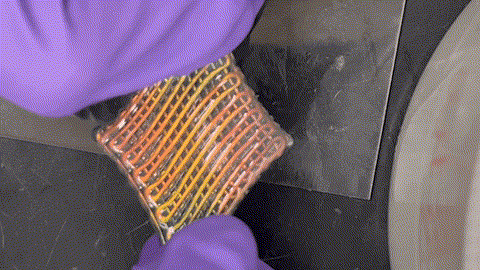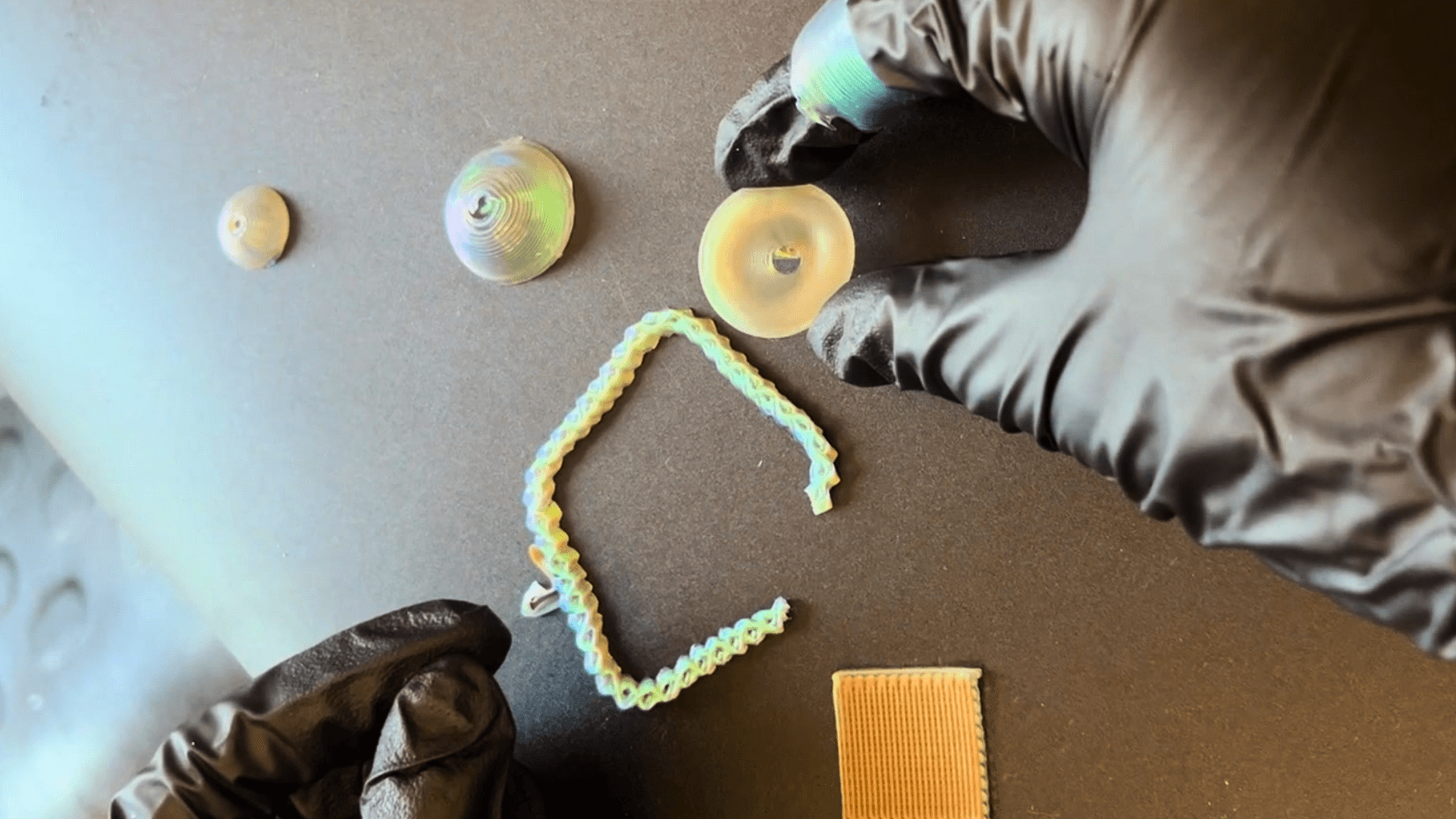Researchers from Penn Engineering, Harvard University, Duke University, UC Berkeley, and Lawrence Livermore National Laboratory have developed a method to 3D print cholesteric liquid crystal elastomers (CLCEs). The team’s work, published in Advanced Materials, enables the creation of color-changing materials that respond to mechanical stress. CLCEs are soft, rubbery materials that can manipulate light similar to beetle shells, changing color when subjected to physical force.

The new technique utilizes Coaxial Direct Ink Writing (DIW), overcoming previous limitations that confined CLCEs to 2D planar films. Researchers solved a key challenge by developing a transparent silicone shell that serves as a scaffold for the CLCE core. “This unique combination of materials allowed us to preserve the color-changing properties of the CLCEs while providing the necessary structural strength to support intricate 3D designs,” said Alicia Ng, lead author of the study.
Applications for this technology span multiple industries including healthcare, robotics, and environmental monitoring. The materials could be used in wearable devices that provide visual feedback about mechanical stress or swelling. Katherine Riley, mechanical engineer at LLNL, noted potential uses in “robotic grippers that can snap open and closed, metamaterial sheets that can passively sense and record mechanical loads, and mechanical logic systems.”

The research team is exploring combinations of CLCEs with temperature or light-responsive materials to create multi-stimulus responsive materials. They have already printed various structures including lattices, wraps, and filaments, with plans to develop more complex designs. The team is also considering more environmentally friendly approaches, potentially incorporating elements from biofilms.
This collaborative project benefited from the combined expertise in polymers, liquid crystal elastomers, and 3D printing across multiple institutions. Funding came from the National Science Foundation, Harvard MRSEC, the Army Research Office MURI program, and Lawrence Livermore National Laboratory. The research continues through an LLNL Laboratory Directed Research and Development Strategic Initiative aimed at developing “sentient” materials.
Source: blog.seas.upenn.edu

